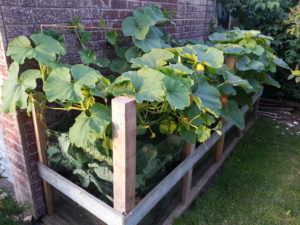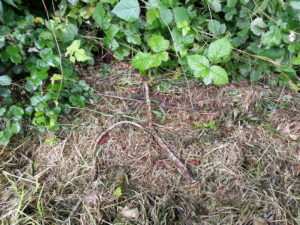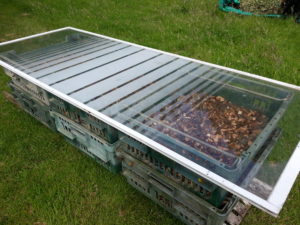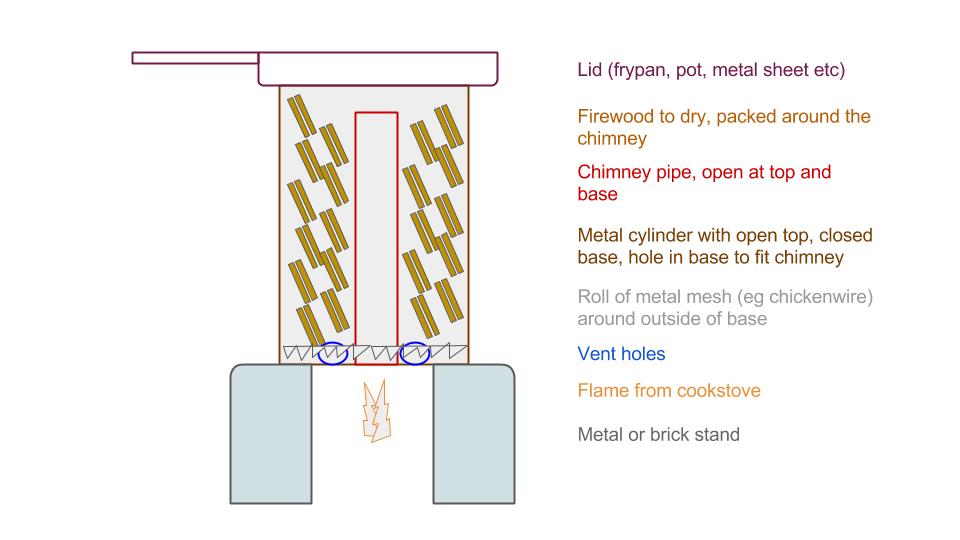The task of climate rescue can feel daunting. Where do you start with the new policy, infrastructure and lifestyles urgently needed to switch humanity from wrecking to restabilizing the climate?  This big switch should and could be made quickly but it’s controlled by a small switch in our heads that’s stuck. Our minds rebel against the scale and complexity of problems like climate change. Besides denial, the only possible response appears to be incremental. Though well meaning, these incremental responses are futile against the problem. Decade after decade, carbon concentrations rise and climate impacts worsen. The task of climate rescue gets more daunting and incremental responses get reinforced rather than challenged. Yesterday’s failure with the climate locks in tomorrow’s failure.
This big switch should and could be made quickly but it’s controlled by a small switch in our heads that’s stuck. Our minds rebel against the scale and complexity of problems like climate change. Besides denial, the only possible response appears to be incremental. Though well meaning, these incremental responses are futile against the problem. Decade after decade, carbon concentrations rise and climate impacts worsen. The task of climate rescue gets more daunting and incremental responses get reinforced rather than challenged. Yesterday’s failure with the climate locks in tomorrow’s failure.
Unlocking that switch in our heads might be impossible if we just talk about it. International climate talks and public debate are both framed within the narrow scope of incremental cuts in emissions. Anything beyond gets filtered out as impractical idealism. The untapped potential of non-incremental responses remains a blindspot. Ending that blindspot and starting climate rescue becomes possible when it no longer seems daunting, when simple practice can demonstrate how to switch from causing to reversing a problem. The best example of this practice is biochar, which is surplus biomass turned to charcoal and not burned. The carbon in the charcoal doesn’t biodegrade back into the air and remains usefully stored, to reverse the process of climate change and other acute global problems.
 Biochar is so useful that when you start to use it, the benefits entice you to keep going. Biochar significantly builds the capacity of soil to support stronger crop growth while withstanding dry periods. The most striking example I know is this biochar-enhanced vegetable raised-bed which has so far needed no watering this year, even after 3 weeks without rain. The biochar acts as a sponge and storage for water.
Biochar is so useful that when you start to use it, the benefits entice you to keep going. Biochar significantly builds the capacity of soil to support stronger crop growth while withstanding dry periods. The most striking example I know is this biochar-enhanced vegetable raised-bed which has so far needed no watering this year, even after 3 weeks without rain. The biochar acts as a sponge and storage for water.
The enticement of biochar makes it easy to learn. Once you start you’ll probably want to keep going. You’ll enjoy cooking that creates biochar and gardening that uses biochar. You’ll know how to do this effectively and want to share your knowledge with others. Perhaps without noticing you’ll have made that small switch in your head from wanting to reduce problems, to reversing them. You’ll make climate rescue possible.
 Where should you start? When you want to make and use biochar, there’s an ideal first step. Collect dry sticks. Unless you have mega-expensive industrial equipment, biochar is best made with dry biomass. To avoid smoke during cooking, the sticks need to be really dry, drier than for firewood. As a measurement you want less than 15% water content to make biochar, compared to under 25% for firewood. Digital moisture meters are cheap and handy but you can also get dry sticks without a meter.
Where should you start? When you want to make and use biochar, there’s an ideal first step. Collect dry sticks. Unless you have mega-expensive industrial equipment, biochar is best made with dry biomass. To avoid smoke during cooking, the sticks need to be really dry, drier than for firewood. As a measurement you want less than 15% water content to make biochar, compared to under 25% for firewood. Digital moisture meters are cheap and handy but you can also get dry sticks without a meter.
Collect sticks between 1/4 to 1″ diameter, from prunings not whole trees. They should be seasoned for at least 4 months, not freshly cut from  live trees. After seasoning they usually need further drying. Two days of temperate summer sunshine should bring the moisture down to between 5 to 10%. In spring or autumn a week of sunshine with the sticks raised off the ground and protected from showers under glass or clear plastic should also bring the moisture under 15%. In winter you can bring batches of wood indoors or into a dry greenhouse. The sticks can be made into chunks in a garden shredder or cut to 5″ lengths.
live trees. After seasoning they usually need further drying. Two days of temperate summer sunshine should bring the moisture down to between 5 to 10%. In spring or autumn a week of sunshine with the sticks raised off the ground and protected from showers under glass or clear plastic should also bring the moisture under 15%. In winter you can bring batches of wood indoors or into a dry greenhouse. The sticks can be made into chunks in a garden shredder or cut to 5″ lengths.
For those times when you find a shortage of both sunshine and dry sticks, a drying chimney is a very effective option. This is simple to make from salvaged and recycled materials, using our opensourced design which is a 2016 winner on MIT’s Climate CoLab. 
Summer is an ideal time to gather fuel for a biochar cookstove. Once it is dry you need to keep it protected against new moisture from rain or damp air. Your biochar fuelwood can be stored in containers in a dry shed or outdoors in plastic bags inside a plastic bin with snug-fitting lid. Now you’re ready to start making and using your own cookstove and your own biochar!
Read about 2050Kids Biochar Cookstove Project.
